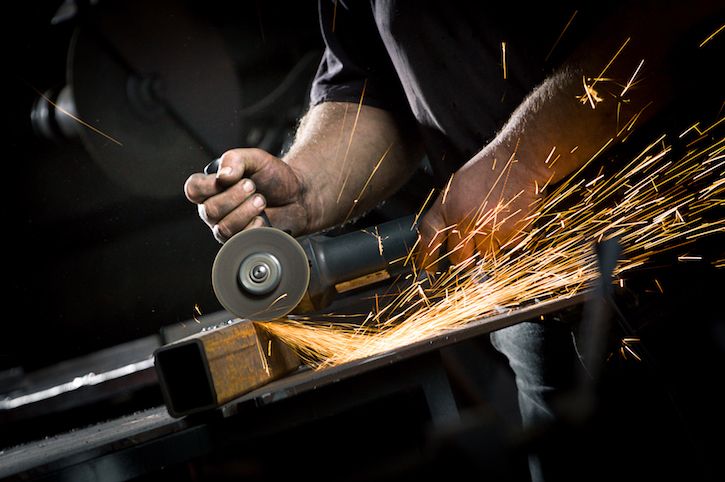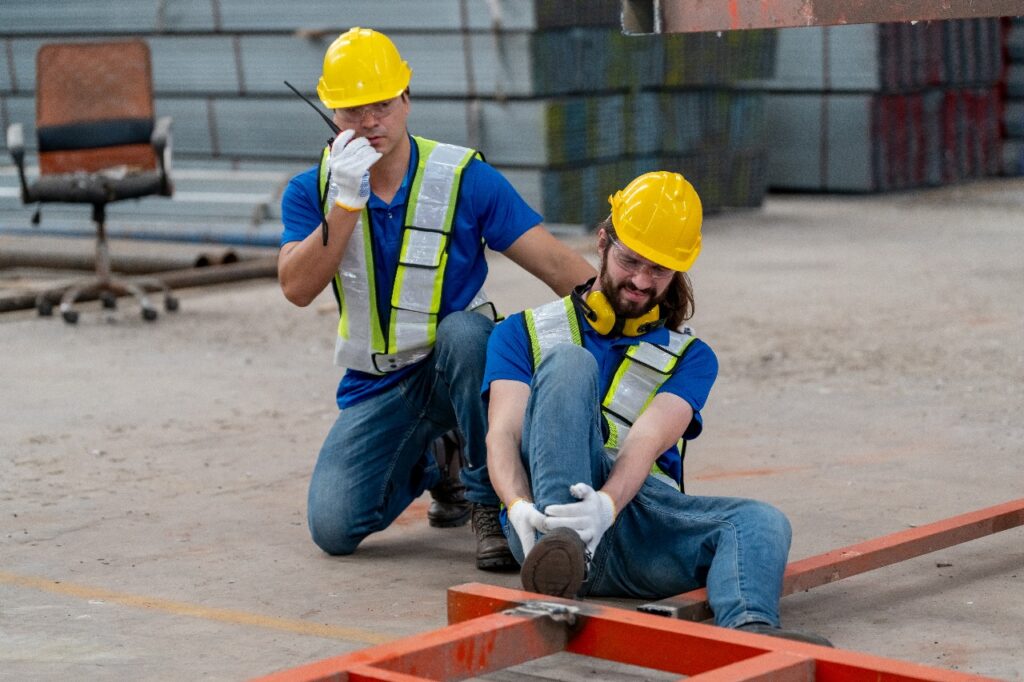In today’s fast-changing industrial world, precision has become more than just a goal it’s a requirement. From aerospace to automotive and renewable energy to construction, industries now rely on precision metal fabrication to build components that are stronger, lighter, and more efficient than ever before.
What once depended on manual craftsmanship is now driven by digital design, automated machinery, and advanced materials. Precision metal fabrication sits at the centre of this transformation, powering the next wave of industrial innovation across nearly every sector.
Understanding Precision Metal Fabrication
Metal fabrication is the process of cutting, shaping, and assembling metal parts into finished products or structures. Traditional fabrication methods relied heavily on manual tools and skilled labour. While craftsmanship remains valuable, the introduction of precision fabrication technologies such as CNC machining, laser cutting, and automated welding has revolutionised the process.
Precision metal fabrication is all about achieving exact tolerances and repeatable results, ensuring that every component fits perfectly into its intended design. This level of control is crucial for industries that demand high performance and safety, like aerospace, automotive, energy, and defence.
The Shift from Manual to Smart Fabrication
A few decades ago, metal fabrication was largely mechanical. Workers would measure, mark, cut, and weld parts by hand. While effective for basic structures, this method lacked the accuracy and efficiency needed for complex industrial designs.
The turning point came with the rise of computer-controlled manufacturing. CNC (Computer Numerical Control) machines, automated plasma cutters, and 3D laser systems transformed fabrication into a digital, data-driven process.
Now, precision is programmed not guessed. Components are designed using CAD (Computer-Aided Design) and CAM (Computer-Aided Manufacturing) software, allowing fabricators to create virtual prototypes before any metal is cut. This eliminates trial-and-error, reduces waste, and speeds up production timelines.
This shift to digital fabrication represents the foundation of Industry 4.0, where automation, robotics, and data analytics combine to improve manufacturing performance at every level.
Core Technologies Driving Precision Metal Fabrication
Several cutting-edge technologies have made precision fabrication possible each contributing to accuracy, efficiency, and cost savings.
1. CNC Machining
CNC machines use pre-programmed commands to cut, mill, and shape metal with unmatched accuracy. These machines can achieve tolerances as small as a few micrometres, making them ideal for complex components used in aerospace engines, medical devices, and automotive parts.
CNC machining also reduces labour time, improves consistency, and allows for intricate geometries that would be impossible to produce manually.
2. Laser Cutting and Engraving
Laser systems deliver precise, clean cuts with minimal material waste. They are ideal for both thick and thin metals and are widely used for custom panels, sheet metal designs, and structural components. Laser technology also supports detailed engraving and part marking for traceability.
3. Robotic Welding
Automation has improved welding accuracy and speed dramatically. Robotic arms perform clean, consistent welds without fatigue, ensuring stronger joints and improved quality. Robotic welding also enhances worker safety by reducing exposure to heat, fumes, and sparks.
4. Waterjet and Plasma Cutting
Waterjet cutting uses high-pressure water mixed with abrasives to slice through metal without generating heat, preventing material distortion. Plasma cutting, on the other hand, uses an ionised gas stream to make fast, clean cuts on conductive metals like steel or aluminium. Both technologies deliver exceptional versatility and precision.
5. Additive Manufacturing Integration
While traditionally considered a subtractive process, modern fabrication now blends with additive manufacturing (3D printing) for prototyping and hybrid production. This combination allows fabricators to design, test, and refine complex metal parts faster than ever.
Why Precision Fabrication Matters for Modern Industry
Precision metal fabrication plays a critical role in shaping modern manufacturing for several key reasons.
Higher Efficiency and Lower Waste
Accurate cutting, bending, and machining mean fewer material errors and minimal scrap. Digital control systems optimise every movement, ensuring maximum use of raw material a crucial factor as steel and aluminium costs continue to rise globally.
Improved Product Quality
Precision fabrication guarantees uniformity and repeatability. Whether producing a single prototype or thousands of identical parts, the final components meet exact design requirements, improving reliability and safety in the field.
Faster Production Cycles
Automation and CNC technology drastically reduce setup time and eliminate the need for manual adjustments. Fabricators can switch between jobs quickly, adapt to changing demands, and deliver products faster all while maintaining quality.
Design Flexibility
Modern fabrication tools support intricate designs with curved, perforated, or custom patterns. This flexibility allows manufacturers to innovate freely, experimenting with lighter structures, stronger joints, and improved performance characteristics.
Cost Savings and Scalability
While the initial investment in precision equipment can be high, the long-term return is significant. Reduced labour, lower waste, and faster turnaround times translate into substantial cost savings. Moreover, precision systems allow easy scalability from small custom orders to full-scale production.
Precision Fabrication Across Key Industries
The benefits of precision fabrication extend across nearly every industrial sector:
- Aerospace: Producing high-tolerance parts for aircraft engines, fuselages, and landing gear where safety and performance are critical.
- Automotive: Enabling lighter, stronger vehicle components that enhance efficiency and reduce emissions.
- Construction: Creating durable structural elements, beams, and fittings with consistent quality.
- Renewable Energy: Supporting wind turbines, solar frames, and energy storage systems that demand precision and strength.
- Medical Equipment: Manufacturing surgical instruments and implants that must meet exact standards for patient safety.
In each case, precision fabrication ensures that every component functions perfectly under stress, pressure, and extreme environmental conditions.
How Automation and Data Are Redefining Fabrication
The newest phase of industrial innovation combines precision fabrication with automation and digital intelligence. Factories are now integrating sensors, AI-driven monitoring, and cloud-based production systems that track every step in real time.
Machines can detect wear, optimise cutting paths, and even predict maintenance needs before a breakdown occurs. This reduces downtime and ensures continuous production a hallmark of smart manufacturing.
By combining CNC systems, robotics, and data analytics, the fabrication process becomes more predictable, sustainable, and efficient, characteristics that define the factories of the future.
The Future of Precision Metal Fabrication
As industries push for cleaner, smarter, and faster production, precision fabrication will remain at the forefront of progress. Emerging technologies such as AI-driven design, digital twins, and hybrid manufacturing will allow engineers to build better products with fewer resources.
Sustainability will also play a major role. With growing demand for recycled metals, eco-friendly coatings, and energy-efficient machinery, fabricators are finding innovative ways to reduce their environmental footprint while maintaining performance.
In the coming years, the combination of advanced automation, precision control, and data connectivity will transform fabrication from a mechanical process into a fully digital ecosystem one that continuously adapts, learns, and improves.
Conclusion
Precision metal fabrication has become the backbone of modern industrial innovation. By merging technology, accuracy, and efficiency, it enables manufacturers to create products that are lighter, stronger, and more cost-effective than ever before.
As industries continue to embrace automation and smart manufacturing, precision fabrication will remain the key to unlocking the next generation of global innovation driving progress not only in production, but in the very way we build the world around us.






